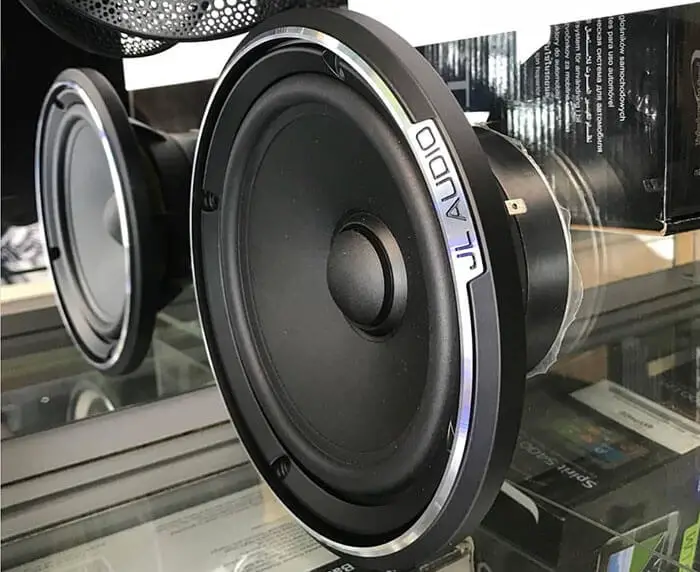You can wire component speakers to 4 channel amp within six steps, like determining wiring configuration and power requirement and connecting the tweeter and amp. It will also require a few tools to wire it correctly and a few factors to consider, such as impedance rating, power handling, wiring configuration, drivers, etc.
I will go through every step in detail, but before that, I will start with the benefits you will get. Let’s get into it!
Benefits and Disadvantages You Need to Know

Before you install the component speaker with the four-channel amp, there are some primary things you need to consider. These will give you an understanding if it is worth the process.
- Of course, you want better audio quality and will get it when the process is done, as it will provide separate channels of amplification for the tweeter and woofer.
- Besides, it will ensure that each driver receives the appropriate frequency range, increasing the chance of better audio quality.
- You will get a louder and more dynamic sound as the amp pumps your speakers more power.
- If you want to power additional speakers or subwoofers, do that because you will have the flexibility.
- The amp will provide enough power so your component speaker won’t produce distortion or clipping.
That’s not all! In my experience, there are some issues you might face too!
- It can be expensive, as most component speakers and 4-channel amplifiers are, although it depends on the model.
- You will need extra components such as resistors.
- You must arrange a proper system for a better power supply if you have more speakers.
5 Factors to Consider Before Wiring to 4-Channel Amp
Now, it’s not just getting the right and compatible components but also that your component speaker and amp don’t face any damage, and you will have to repair it. To avoid any issues in the future, you must consider a few factors if you want to wire your component speaker to a 4-channel amplifier.
Factor #1: Impedance Rating
The most crucial factor, in this case, is the impedance rating, as component speakers typically have a lower impedance than standard speakers, and it’s essential to match the impedance of the speakers to the amplifier.
Besides, you must ensure that the amplifier can handle the impedance of the component speakers you’re using, and depending on that, you must adjust the wiring configuration.
For example, for a 4-ohm amp, you mustn’t connect the component speaker with less than that number, which is 4.
Factor #2: Wiring Configuration
Of course, the wiring configuration would be the next prioritized factor. Depending on the number of channels on the amplifier and the wiring configuration of the component speakers, you may need to wire the speakers in series or parallel to ensure a good match with the amplifier.
In this case, I have a 4-channel amp, so depending on that, I must determine the best wiring configuration.
Factor #3: Power Handling
As mentioned, more channels require more power, and component speakers are high maintenance for power handling. You must ensure the amplifier has enough ability to drive the component speakers to their full potential but avoid overdriving the speakers.
Not to mention it’s essential to match the power handling of the amplifier to the power requirements of the component speakers, but also to protect or prevent any damage to the components.
Factor #4: Drivers
When dealing with component speakers, they have multiple drivers (typically a tweeter and a woofer), each requiring an amplification channel.
When you have a 4-channel amp, a crossover separates the frequencies and directs them to the appropriate driver, so you must ensure the crossover is appropriately configured to optimize the sound quality of the component speakers.
Factor #5: Audio Quality
Every factor and the primary reason for connecting the speaker and the amp falls apart if they serve proper and quality audio. Installing and adjusting the amplifier and crossover settings might be time-consuming, but it will help you achieve the best sound quality for your particular setup.
Do You Need Technician or Expert helps?
Tools You Will Need
Here is a list of all tools you will need besides a component speaker and a 4-channel amp to wire component speakers to a 4-channel amp to save you the hassle.
- Wiring (17ft Red and 3ft Black RCA cables and 17ft Power Wires): Connect the component speakers to the amplifier.
- Wire Strippers: Strip the insulation.
- Crimping Tool: Crimp connectors.
- Mounting Hardware: Securely mount the component speakers and amplifier.
These will do the job!
6 Steps to Wire Component Speakers to 4-Channel Amp

Here, I will go through every step to give you an overall idea of how to wire component speakers to 4 channel amp.
Step #1: This step is easy as it doesn’t require more than determining the wiring configuration of your component speakers, but it can be tricky. You can use either Single wiring or Bi-wiring, whichever seems convenient.
Step #2: After that, you must determine the power requirements of your component speakers. You can see the speaker’s RMS power rating in its manual book or the box to do that.
Step #3: And then find the “speaker outputs” or amplifier’s speaker output terminals.
Step #4: You need to connect the tweeter to the amplifier in this part. You will see the positive terminal of the tweeter and connect it to one of the amplifier’s front channel outputs. And get the negative terminal to the other front channel output.
Step #5: Connect the woofer as you connect the amplifier.
Step #6: When everything is done, set the crossover point for the tweeter to be higher than the woofer
I’m almost done installing it, but not yet. To see if everything is running smoothly, turn on the amplifier and play music to test the system.
If you need to adjust the gain and crossover settings to ensure the speakers are correctly balanced and produce the desired sound, do that.
Sometimes finding a suitable 4-channel amp for your component speaker might be overwhelming, so I want to help you find it in the following section.
2 Recommended 4-Channel Amp for Your Component Speaker
Here are two 4-channel amps to save you the trouble of finding a proper set for your speaker. I won’t go into much detail, but they are highly recommended.
Rockford Fosgate R400-4D
You should get it if you’re looking for an exceptional 4-channel amplifier that delivers high-quality sound and outstanding performance. Here is why:
- It can easily power your component speakers and deliver crisp and clear sound by delivering 50 watts of RMS to each of the four channels at 4 ohms.
- It has a variable high-pass/low-pass crossover that allows you to adjust the sound to your liking.
- You can also use it in 2-channel mode to power a subwoofer or other speakers.
- Lastly, it is highly efficient and produces less heat than traditional class AB amplifiers, as it is a class D amplifier.
Kenwood KAC-M3004
The Kenwood KAC-M3004 also made this list because;
- With a peak power of 600 Watts. RMS and nominal capacity of 50 Watts, the amp can deliver enough power to drive most component speakers.
- It comes with a variable crossover that allows you to adjust the frequency range of the sound output.
- Don’t worry if you got a small room because it has a small footprint and is designed to fit into tight spaces, making it easy to install in various vehicles.
- Like the other choice, it is also a class D amplifier design, so it runs cooler and draws less power.
Wrap Up
Hopefully, you can now wire your component speakers to the 4-channel amp. I tried to give you as much detail as possible and a few suitable options to save you the hassle of finding a compatible option.
Let me know if you got any other better choice and anything regarding the component speaker and different types of amp channels. See you at another time! Good luck!
